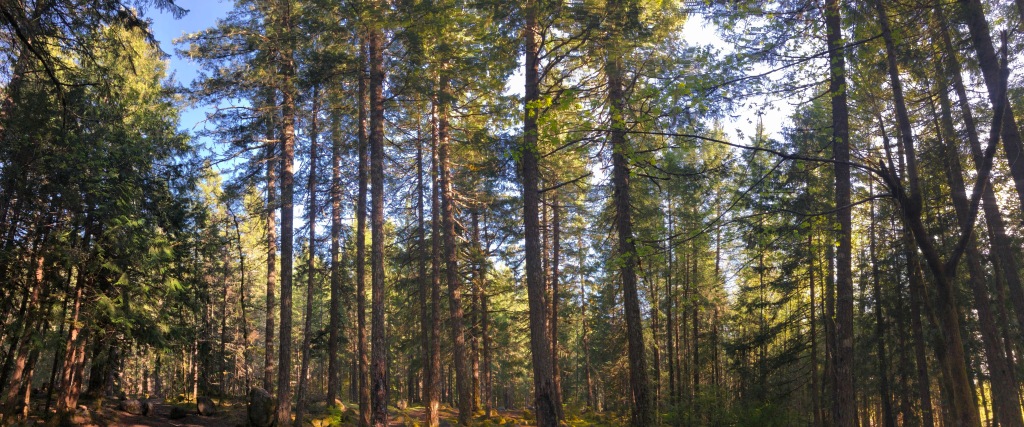
For this portion of my report, I went out in the field to get practice identifying trees. I chose to make my observations near Zig Zag in the Mount Hood National forest because of its proximity to Portland. In my last blog post, I provided a list of tree species found commonly in this forest, which included Douglas-fir (Pseudotsuga menziesii), western red cedar (Thuja plicata), noble fir (Abies procera), ponderosa pine (Pinus ponderosa), western hemlock (Cicuta Douglasii), bigleaf maple (Acer macrophyllum), vine maple (Acer circinatum), black cottonwood (Populus trichcarpa), and the rare whitebark pine (Pinus albicaulis). Before heading out to the forest, I studied the identifying features of these tree species, such as needle shape & orientation, bark texture, and cone shape.
During my time in the field, I was able to identify five different tree species:
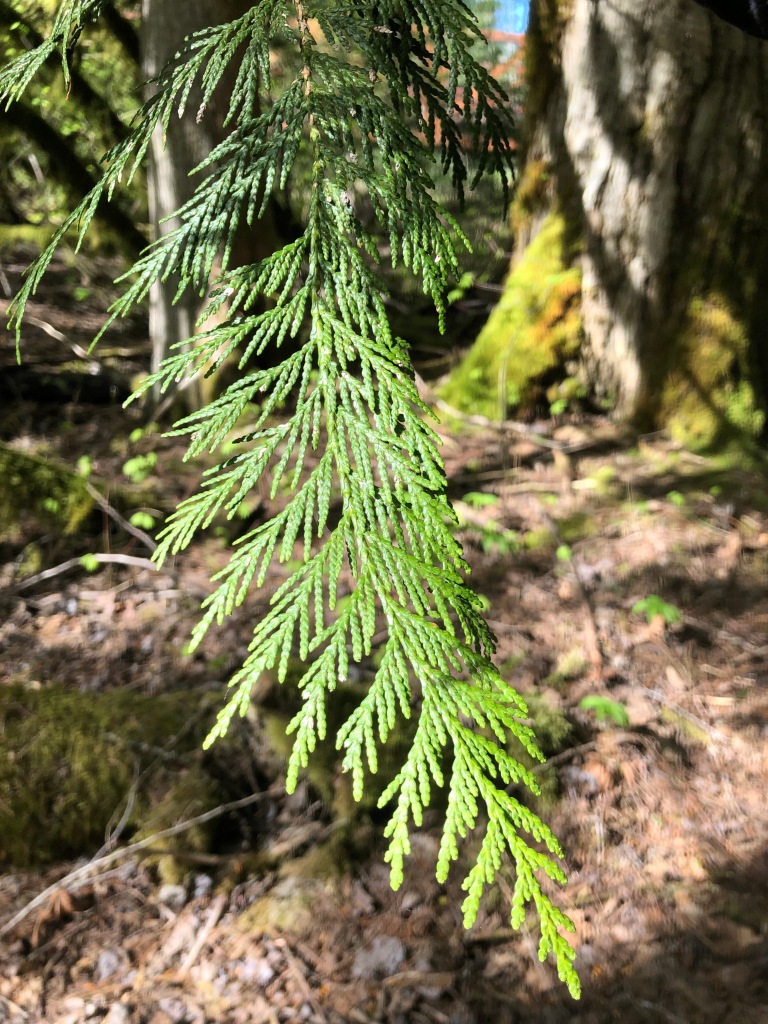
Western Redcedar (Thuja plicata)
This is a shade tolerant species, so it has flattened, scale-like foliage to maximize photosynthesis. It can also be identified by its long, droopy branches and redish, stringy bark. This was the most abundant species in the area I was making observations. There was a mix of ages observed, from small saplings to over 50 meter tall adults.
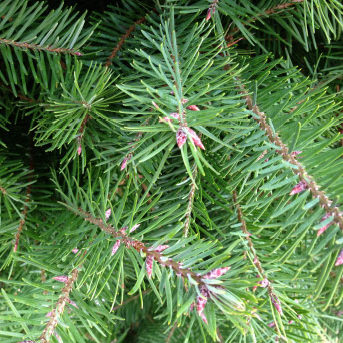
Douglas-fir (Pseudotsuga menziesii)
Douglas-firs are easily identified by their branches with one inch, soft pointed needles that stick out in all directions. They also have grey or brown bark with deep furrows. The ages and sizes ranged from sampling to young adults, but the majority observed were around 60 meters tall with a diameter of 2 feet.
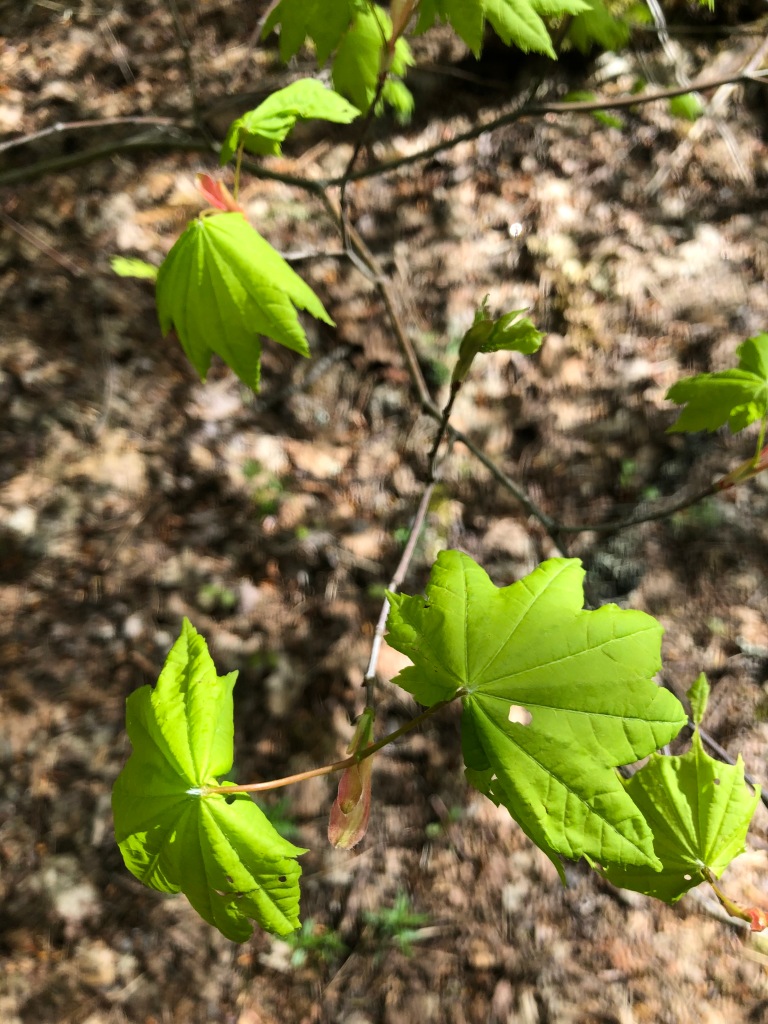
Vine maple (Acer circinatum)
When identifying these trees, I knew they were in the maple family because of the opposite branching pattern and 7-9 point leaves. The leaves are palmately veined, meaning all the veins radiate out from a central point. I also observed samaras on some of the branches, which are the fruit of maples, commonly referred to as “helicopters.” These trees are easy to distinguish from other maples native to this region because they only grow up to seven meters tall and tend to grow crooked, hanging above the ground rather than straight up.
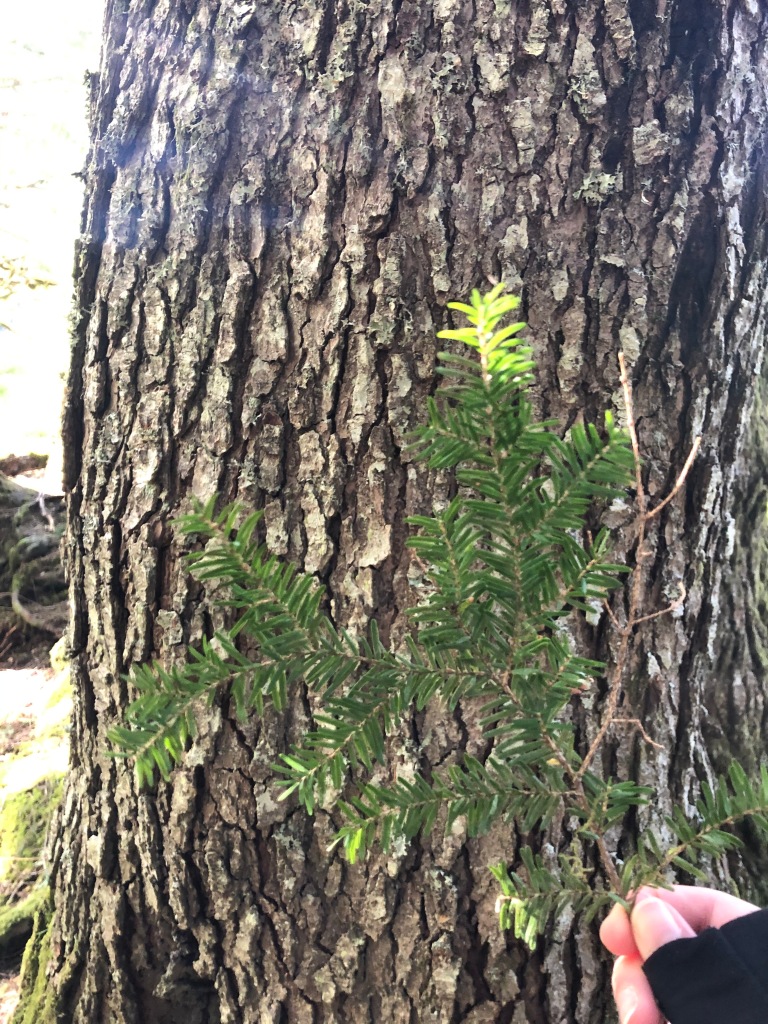
Western hemlock (Cicuta Douglasii)
To identify this tree, I started by looking at the needles on the branches, which are arranged in a spiral pattern that flatten out as they reach the base. The needles were flat and the cones were small and slender. I also looked at the bark of the tree, which was brown and furrowed. I also noticed a lack of branches at the bottom 10-20 meters of the tree, which is common for older stands of western hemlock.
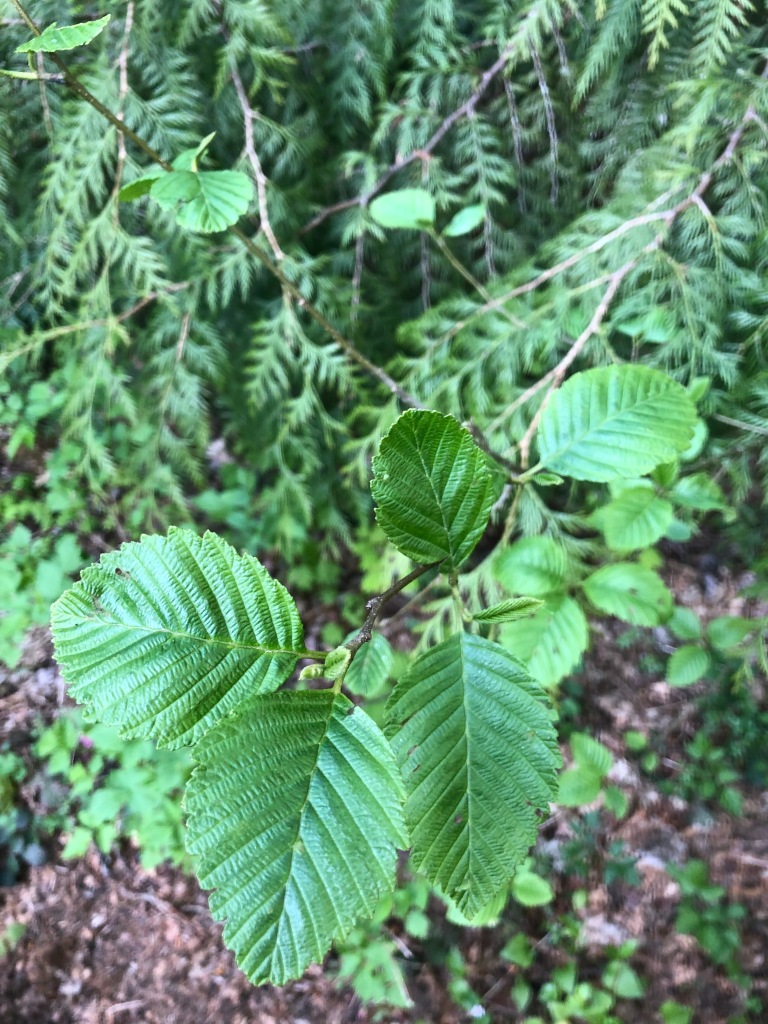
Red alder (Alnus rubra)
I also identified many young and adult Red alder trees along the Zig Zag river. These are identified by their thin, grey bark and tear drop shaped, toothed leaves. Alders prefer to grow in areas with plenty of sunlight and nutrients, which is why they are often found along stream banks and floodplains.
I also observed a variety of lichen, mosses, ferns, and other plant species, including Calypso bulbosa, a native orchid of Oregon!
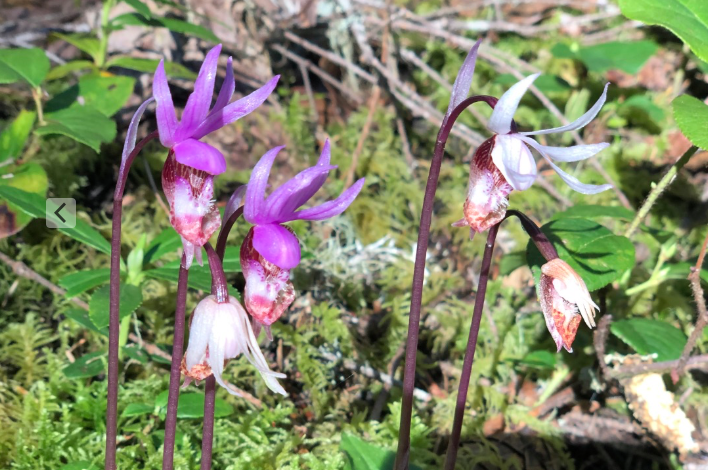
Since I only made observations in one area, my findings are not representative of the entire forest, but did provide a great opportunity to get experience identifying trees and an excuse to leave the house!
References
British Columbia. Tree Book. Retrieved from https://www.for.gov.bc.ca/hfd/library/documents/treebook
Oregon Forest Resource Institute. Trees of Oregon’s Forests. Retrieved from https://oregonforests.org/content/tree-variety
Hi Lexie, really great work. I love the layout of your blog post. I think that Mt. Hood forest is absolutely stunning. Thats great you included Oregon’s Calypso Orchid, I have been missing the Cascades’s spring wildflowers this year.
Thanks for sharing!
LikeLike
Beautiful report! The pictures look nice and are also a good learning tool for identifying trees. I also like the Calypso bulbosa pic! If I remember correctly, you and I saw the young version of this flower at Peach Cove Fen.
LikeLike